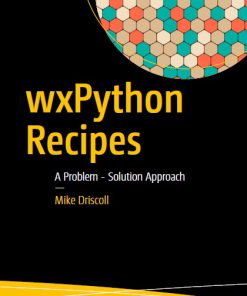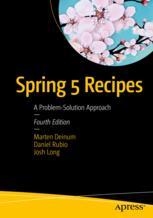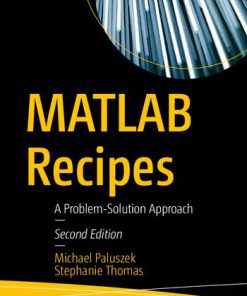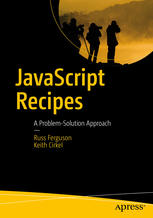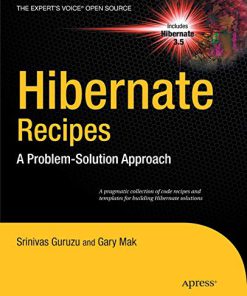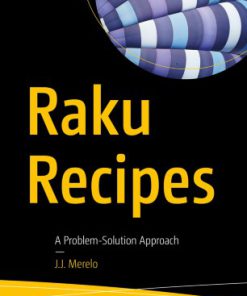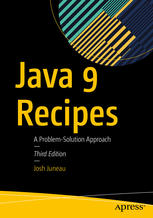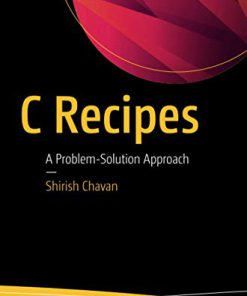Hibernate Recipes A Problem Solution Approach 2nd edition by Mak Gary, Guruzu Srinivas, Ottinger Joseph 1484201275 9781484201275
$50.00 Original price was: $50.00.$25.00Current price is: $25.00.
Hibernate Recipes A Problem Solution Approach 2nd edition by Mak Gary, Guruzu Srinivas, Ottinger Joseph – Ebook PDF Instant Download/DeliveryISBN: 1484201275, 9781484201275
Full download Hibernate Recipes A Problem Solution Approach 2nd edition after payment.
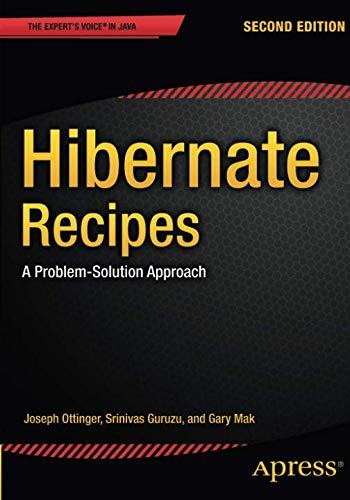
Product details:
ISBN-10 : 1484201275
ISBN-13 : 9781484201275
Author: Mak Gary, Guruzu Srinivas, Ottinger Joseph
Hibernate Recipes, Second Edition contains a collection of code recipes and templates for learning and building Hibernate solutions for you and your clients, including how to work with the Spring Framework and the JPA. This book is your pragmatic day-to-day reference and guide for doing all things involving Hibernate. There are many books focused on learning Hibernate, but this book takes you further and shows how you can apply it practically in your daily work. Hibernate Recipes, Second Edition is a must have book for your library. Hibernate 4.x continues to be the most popular out-of-the-box, open source framework solution for Java persistence and data/database accessibility techniques and patterns and it works well with the most popular open source enterprise Java framework of all, the Spring Framework. Hibernate is used for e-commerce–based web applications as well as heavy-duty transactional systems for the enterprise.
Hibernate Recipes A Problem Solution Approach 2nd table of contents:
Chapter 1: Starting with Hibernate
1-1. Setting Up a Project
Problem
Solution
How It Works
Installing Eclipse
Installing Maven
Setting Up a Maven Project
Creating a Maven Project Using an Archetype
Running Unit Tests
Creating Modules
1-2. Setting Up a Database
Problem
Solution
How It Works: Setting Up H2
Configuring Hibernate
Setting Up the H2 Console to View Data
How It Works: Setting Up Derby
Installing Derby
Creating a Derby Database Instance
Creating the Tables (Relational Model)
1-3. Configuring Hibernate
Problem
Solution
How It Works
Configuration
Programmatic Configuration
XML Configuration
Opening and Closing Sessions
Creating Mapping Definitions
Retrieving and Persisting Objects
1-4. Using the JPA EntityManager
Problem
Solution
How It Works
1-5. Enabling Logging in Hibernate
Problem
Solution
How It Works
Inspecting the SQL Statements Issued by Hibernate
Enabling Live Statistics
Summary
Chapter 2: Basic Mapping and Object Identity
2-0. Using JPA Annotations
Problem
Solution
How It Works
2-1. Providing an ID for Persistence
Problem
Solution
How It Works
Using the Database Sequence
Using an Increment Generator
Using the Hilo Generator
Enhanced Sequence Style Generator
Enhanced Table Generator
2-2. Creating a Composite Key in Hibernate
Problem
Solution
How It Works
Multiple ID Properties Declared Within the Entity
Multiple ID Properties as an Identifier Type
Composite ID as a Property Using a Component Type
2-3. saveOrUpdate( ) in Hibernate
Problem
Solution
How It Works
2-4. Dynamic SQL Generation in Hibernate
Problem
Solution
How It Works
Summary
Chapter 3: Component Mapping
3-1. Implementing a Value Type as a Component
Problem
Solution
How It Works
Using Hibernate XML Mapping
Using JPA Annotations
3-2. Nesting Components
Problem
Solution
How It Works
3-3. Adding References in Components
Problem
Solution
How It Works
3-4. Mapping a Collection of Components
Problem
Solution
How It Works
3-5. Using Components as Keys to a Map
Problem
Solution
How It Works
Summary
Chapter 4: Inheritance and Custom Mapping
4-1. Mapping Entities with Table per Class Hierarchy
Problem
Solution
How It Works
4-2. Mapping Entities with Table per Subclass
Problem
Solution
How It Works
4-3. Mapping Entities with Table per Concrete Class
Problem
Solution
How It Works
4-4. Mapping Entities with Table per Class with a Mapped Superclass
Problem
Solution
How It Works
4-5. Custom Mappings
Problem
Solution
How It Works
Summary
Chapter 5: Many-to-One and One-to-One Mapping
5-1. Using Many-To-One Associations
Problem
Solution
How It Works
5-2. Using a Many-to-One Association with a Join Table
Problem
Solution
How It Works
5-3. Using Lazy Initialization on Many-to-One Associations
Problem
Solution
How It Works
5-4. Creating a One-to-One Association Using a Foreign Key
Problem
Solution
How It Works
5-5. Creating a One-to-One Association Using a Join Table
Problem
Solution
How It Works
Summary
Chapter 6: Collection Mapping
6-1. Mapping a Set
Problem
Solution
How It Works
6-2. Mapping a Bag
Problem
Solution
How It Works
6-3. Mapping a List
Problem
Solution
How It Works
6-4. Mapping an Array
Problem
Solution
How It Works
6-5. Mapping a Map
Problem
Solution
How It Works
6-6. Sorting Collections
Problem
Solution
How It Works
Using the Natural Order
Writing Your Own Comparator
Sorting in the Database
6-7. Using Lazy Initialization
Problem
Solution
How It Works
Summary
Chapter 7: Many-Valued Associations
7-1. Mapping a One-to-Many Association with a Foreign Key
Problem
Solution
How It Works
7-2. Mapping a One-to-Many Bidirectional Association Using a Foreign Key
Problem
Solution
How It Works
7-3. Mapping a One-to-Many Bidirectional Association Using a Join Table
Problem
Solution
How It Works
7-4. Mapping a Many-to-Many Association with a Join Table
Problem
Solution
How It Works
Summary
Chapter 8: HQL and JPA Query Language
8-1. Using the Query Object
Problem
Solution
How It Works
Creating a Query Object
from Clause
where Clause
Pagination
Parameter Binding
Named Queries
8-2. Using the Select Clause
Problem
Solution
How It Works
8-3. Joining
Problem
Solution
How It Works
Explicit Joins
Implicit Joins
Outer Joins
Matching Text
Fetching Associations
8-4. Creating Report Queries
Problem
Solution
How It Works
Projection with Aggregation Functions
Grouping Aggregated Results
Summary
Chapter 9: Querying with Criteria and Example
9-1. Using Criteria
Problem
Solution
How It Works
9-2. Using Restrictions
Problem
Solution
How It Works
Writing Subqueries
9-3. Using Criteria in Associations
Problem
Solution
How It Works
9-4. Using Projections
Problem
Solution
How It Works
Aggregate Functions and Groupings with Projections
9-5. Querying by Example
Problem
Solution
How It Works
Summary
Chapter 10: Working with Objects
10-1. Identifying Persistent Object States
Problem
Solution
How It Works
Transient Objects
Persistent Objects
Detached Objects
Removed Objects
10-2. Working with Persistent Objects
Problem
Solution
How It Works
Creating a Persistent Object
Retrieving a Persistent Object
Modifying a Persistent Object
Deleting a Persistent Object
10-3. Persisting Detached Objects
Problem
Solution
How It Works
Reattaching a Detached Object
Merging a Detached Object
10-4. Using Data Filters
Problem
Solution
How It Works
10-5. Using Interceptors
Problem
Solution
How It Works
Summary
Chapter 11: Batch Processing and Native SQL
11-1. Performing Batch Inserts
Problem
Solution
How It Works
11-2. Performing Batch Updates and Deletes
Problem
Solution
How It Works
11-3. Using Native SQL
Problem
Solution
How It Works
11-4. Using Named SQL Queries
Problem
Solution
How It Works
Summary
Chapter 12: Caching in Hibernate
Using the Second-Level Cache in Hibernate
Concurrency Strategies
Cache Providers
Cache Regions
Caching Query Results
12-1. Using the First-Level Cache
Problem
Solution
How It Works
12-2. Configuring the Second-Level Cache
Problem
Solution
How It Works
12-3. Caching Associations
Problem
Solution
How It Works
12-4. Caching Collections
Problem
Solution
How It Works
12-5. Caching Queries
Problem
Solution
How It Works
Summary
Chapter 13: Transactions and Concurrency
13-1. Using Programmatic Transactions in a Stand-alone Java Application
Problem
Solution
How It Works
13-2. Using Programmatic Transactions with JTA
Problem
Solution
How It Works
13-3. Enabling Optimistic Concurrency Control
Problem
Solution
How It Works
13-4. Using Pessimistic Concurrency Control
Problem
Solution
How It Works
Summary
Chapter 14: Web Applications
What Is REST?
14-1. Exposing Persistence Over the Web
Summary
People also search for Hibernate Recipes A Problem Solution Approach 2nd:
hibernate recipes a problem-solution approach
hibernate recipes pdf
java hibernate cookbook
hibernate solution
hibernate recipes a problem-solution approach pdf
Tags: Hibernate Recipes, Problem Solution, Mak Gary, Guruzu Srinivas, Ottinger Joseph
You may also like…
Computers - Programming
wxPython Recipes: A Problem – Solution Approach 1st Edition Mike Driscoll
Computers - Programming
Spring 5 Recipes: A Problem-Solution Approach 4th Edition Marten Deinum
Computers - Applications & Software
MATLAB Recipes: a problem-solution approach 2nd Edition Michael Paluszek
Computers - Programming
Hibernate Recipes A Problem Solution Approach Expert s Voice in Open Source Mak Gary Guruzu Srinivas
Computers - Programming
Computers - Programming
Computers - Programming
Java 9 Recipes A Problem Solution Approach 3rd Edition by Josh Juneau 1484219767 9781484219768
Computers Computers - Programming
C Recipes – A Problem-Solution Approach 1st Edition by Shirish Chavan 1484229673 9781484229675




